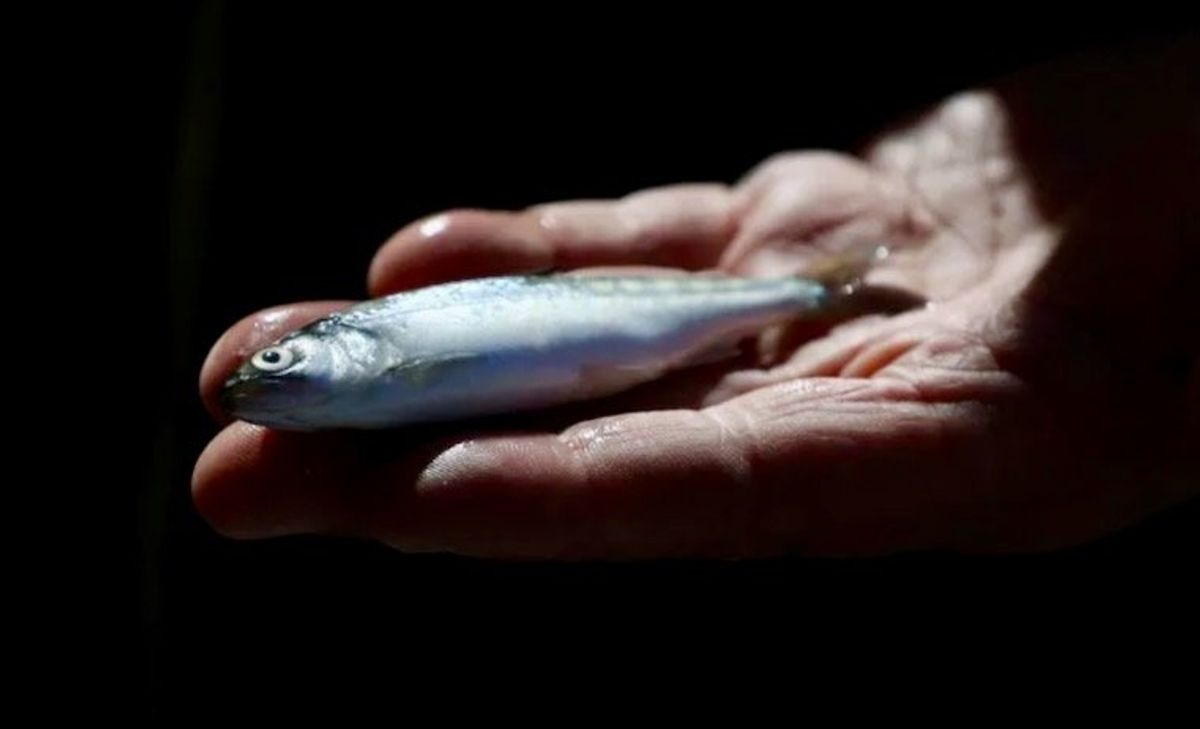Agence France-Presse
April 6, 2024

Chinook salmon are threatened by the decades-long drought
gripping the American West
(JUSTIN SULLIVAN/AFP)
Tens of thousands of endangered salmon being transported by truck to a U.S. river miraculously survived a road crash by escaping into a nearby creek, officials said.
A large tanker vehicle transporting the young salmon -- or smolts -- was traveling in a mountainous area of the northwestern state of Oregon last week when it rolled on its side and skidded off the road.
The 53-foot-long truck ended up on its roof -- fortuitously for its slippery passengers, right next to a small creek.
"About 77,000 smolts made it into the creek when the tanker overturned," said the Oregon Department of Fish and Wildlife in a statement.
The truck driver suffered only minor injuries.
Sadly, some 25,000 smolts were not so lucky in the March 29 accident. They did not reach the river, and their carcasses had to be recovered either in the tanker or on the stream bank, the department said.
Chinook salmon are threatened by the decades-long drought gripping the American West, aggravated by climate change.
The levels of many rivers have dropped, and their waters have grown warmer, while the construction of dams and canals have also imperilled salmon.
The tasty migratory fish are typically born in rivers, swim to the ocean where they reach maturity and can remain for several years, before returning to their native rivers to spawn and die.
Because drought-hit rivers with too little flow or unusually warm water can fatally disrupt that cycle, wildlife officials truck millions of hatchery-raised juvenile salmon to the sea each year.
Road transportation of salmon dates back to the 1980s, but has been ramped up in recent years, as the decline in salmon numbers has steepened.
Countless dams and canals constructed in the region's rivers, in order to support its cities and farms, have robbed salmon of 80 percent of the habitats in which they can spawn.
The smolts lost in last week's accident represent about 20 percent of the total that will be released into Oregon's Imnaha River this year, officials said.
The 77,000 fish that were catapulted into the Lookingglass Creek will likely return there in 2026 and 2027, and produce approximately 350-700 additional adults.
"This should not impact our ability to collect future brood stock or maintain full production goals in the future," said Andrew Gibbs, fish hatchery coordinator for Eastern Oregon.
Tens of thousands of endangered salmon being transported by truck to a U.S. river miraculously survived a road crash by escaping into a nearby creek, officials said.
A large tanker vehicle transporting the young salmon -- or smolts -- was traveling in a mountainous area of the northwestern state of Oregon last week when it rolled on its side and skidded off the road.
The 53-foot-long truck ended up on its roof -- fortuitously for its slippery passengers, right next to a small creek.
"About 77,000 smolts made it into the creek when the tanker overturned," said the Oregon Department of Fish and Wildlife in a statement.
The truck driver suffered only minor injuries.
Sadly, some 25,000 smolts were not so lucky in the March 29 accident. They did not reach the river, and their carcasses had to be recovered either in the tanker or on the stream bank, the department said.
Chinook salmon are threatened by the decades-long drought gripping the American West, aggravated by climate change.
The levels of many rivers have dropped, and their waters have grown warmer, while the construction of dams and canals have also imperilled salmon.
The tasty migratory fish are typically born in rivers, swim to the ocean where they reach maturity and can remain for several years, before returning to their native rivers to spawn and die.
Because drought-hit rivers with too little flow or unusually warm water can fatally disrupt that cycle, wildlife officials truck millions of hatchery-raised juvenile salmon to the sea each year.
Road transportation of salmon dates back to the 1980s, but has been ramped up in recent years, as the decline in salmon numbers has steepened.
Countless dams and canals constructed in the region's rivers, in order to support its cities and farms, have robbed salmon of 80 percent of the habitats in which they can spawn.
The smolts lost in last week's accident represent about 20 percent of the total that will be released into Oregon's Imnaha River this year, officials said.
The 77,000 fish that were catapulted into the Lookingglass Creek will likely return there in 2026 and 2027, and produce approximately 350-700 additional adults.
"This should not impact our ability to collect future brood stock or maintain full production goals in the future," said Andrew Gibbs, fish hatchery coordinator for Eastern Oregon.
No comments:
Post a Comment